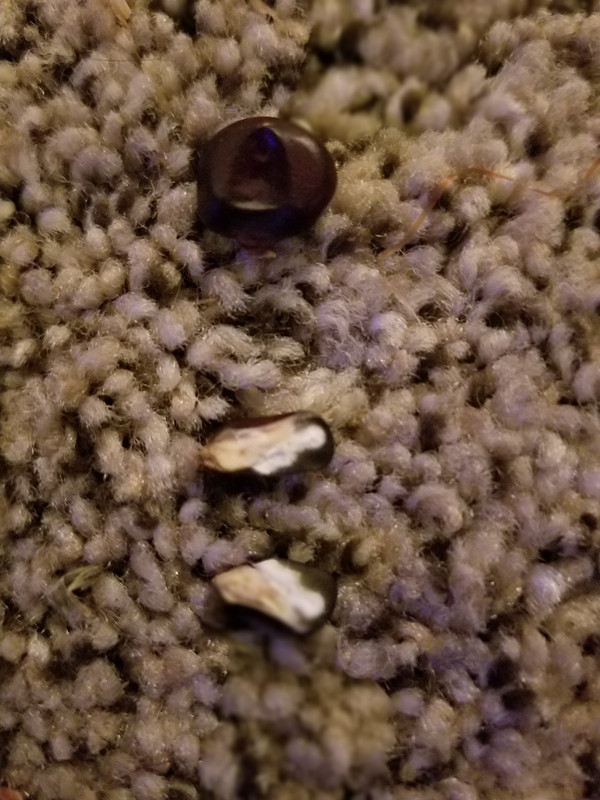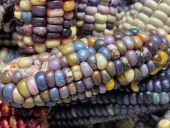O, I love corn breeding projects. I'll give a stab at some of your questions, but I think Joseph is probably the best resource so if I get it wrong maybe he will correct me.
john Harper wrote:
Correct me if I'm wrong, but as I understand it the pericarp and aleurone can be any of the colors listed above, plus white, clear, or any combination thereof, and the endosperm can be clear/white or yellow/orange.
I don't think that the pericarp can on its own, display in all that range of color. It can be anywhere from colorless and transparent to so dark red it looks almost black, and completely opaque. The aleurone from what I've seen can be a range of light blue to very dark purple. I think that the level of anthocyanins it contains accounts for that. Then the endosperm is yellow or white, but the yellow can vary from light to dark. I've read that it can be purple too if there is anthocyanin in the sap, but I've never seen that. Also, having grown a little bit of it I speculate that the orange is another possible exception to the rule of yellow or white endosperm. In fact, I believe it is a separate thing from the other genes for yellow. I think it might be that white endosperm with lots of carotene might show as orange whereas yellow with lots of carotene might be dark orange.
So, you figure in the variability of color in the three, add in the variability of transparency and you get all the possibilities. And they are all inherited by different genes which complicates it even more.
john Harper wrote:
Does such a black-over-orange beast already exist? Is this color combination genetically possible?
Yes, it absolutely is genetically possible. I actually may still have some kernels form an ear of corn from several years back that has it (except for the carotene). That ear is variable for endosperm, some white some yellow. The pericarp is so dark red, almost black and it is completely opaque. When removed it reveals a very dark purple aleurone. The aleurone itself is dark enough that it has to be scraped off to see the endosperm color. Actually, now that I'm remembering it, it may also be possible for anthocyanins to be in the pericarp as well, which I guess makes sense if can be in the sap. I'm thinking that because when I soaked some of those kernels in water it stained it purple.
Anyway, like I said, I'm convinced the black over orange is possible but goodness gracious, bringing the genetics for it all together and stabilizing it is a pretty ambitious goal. I say go for it!
OH! I forgot, when I grew a patch from that ear, two or three plants out of about fifty were red/purple from the prop roots to the tassels. I gave it up though because it was such a huge corn, 12 to 15 feet and also way too long season for my needs.

 3
3




 2
2




 6
6




 1
1






 3
3




 2
2





 2
2




 2
2











